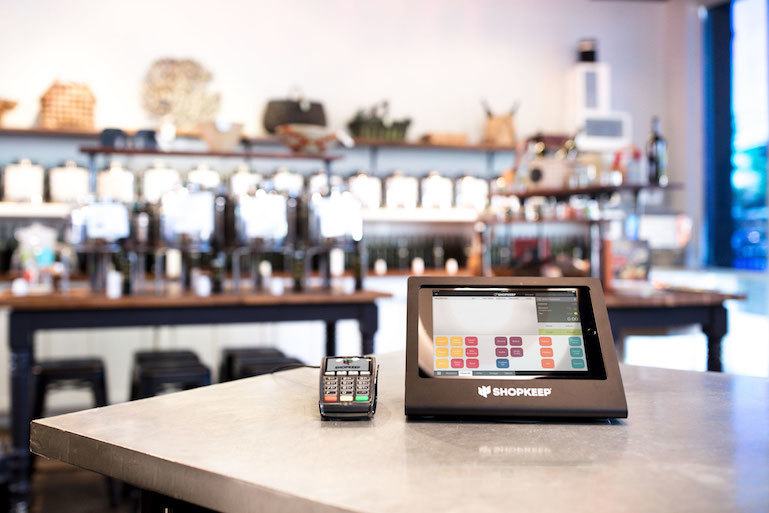
How to Calculate Cost of Goods Sold: What You Need to Know
The end of the year can mean a lot of different things for your business. But one of those things is definitely filing taxes.
Your company’s cost of goods sold (COGS) is a very important factor in both your taxes, as well as your overall business health. It can also affect the long-term profitability of your business.
By calculating COGS correctly and understanding the factors that influence it, you can take an important step towards maintaining the longevity and success of your business. To help you get started, this post will share a breakdown of the cost of goods sold, explain what it means for your business, and share some ways to make calculating it easier for you.
What is the Cost of Goods Sold?
The cost of goods sold (COGS) or the “cost of sales” is the value of a company’s sold merchandise for a given time period. This cost includes everything involved in the making of a product like the cost of raw materials used and labor costs. Your COGS is comprised of two different costs: direct and indirect costs.
- Direct costs: This includes the cost of manufacturing the merchandise like the cost of raw materials used and the supplies used to make it.
- Indirect costs: Also called “factory overhead,” these are the labor costs involved, including the staff wages and utility payments for keeping the lights on.
Say you run a bakery and you need to bake cookies. The money to pay for the raw materials you need to make the cookies, like eggs, flour, milk, and other baking supplies, are part of the direct costs. The indirect cost of baking these cookies would be paying bakers and those who oversee the production.
Keep in mind that COGS only accounts for the cost of items sold, so if you have merchandise that hasn’t sold, the costs for making that merchandise isn’t included in COGS. In addition, this number also doesn’t account for the labor costs that go into promoting or selling things.
To figure out the cost of goods sold, you need to know three things:
- The cost of inventory at the beginning of the year
- The cost of additional inventory purchased throughout the year
- The cost of inventory at the end of the year
For a basic COGS determination, use this formula:
COGS = (Beginning Inventory + Additional Inventory) – End of Year Inventory Cost
This method makes COGS simple to understand. However, there are other methods to consider that may work out better for you.
Methods of Calculating COGS
There are different ways business owners calculate their COGS and end of year inventory, but the FIFO, LIFO, and Average Cost Methods are most common.
- FIFO Method: This is the understanding that the first items added to your inventory are the first ones to be sold. In your bakery, this means that the first baked items are sold first.
- LIFO Method: This is the understanding that the last items added into your inventory are the first ones to be sold. The items baked last would be the first ones sold in this example.
- Average Cost Method: This method uses the average cost of inventory based on the cost of all the other similar items in your inventory. It doesn’t matter when these items were added to the inventory. For the bakery example, those cookies you made are averaged against all other cookies. Cakes are averaged against all other cakes, and so on.
Businesses may choose to use each of these different methods for various reasons. If a business sees that its COGS is increasing, they may be more likely to use the LIFO method since the last items added to inventory are typically the most valuable. When COGS is decreasing, FIFO is more likely used. The Average Cost Method typically results in the lowest COGS of all the methods, which is one of the main reasons that business owners choose it. Whatever method you choose, use it to calculate COGS sold regularly to always be aware of what’s going on with your inventory and costs.
COGS numbers are really important when it comes to understanding and managing your overall business because it directly influences so many of the financial aspects of your operation. Be sure to get this number as accurate as possible regardless of the method you choose. Getting it wrong has serious consequences.
SEE ALSO: How to Calculate Food and Beverage Cost: Know Your Dough
What Does Cost of Goods Sold Mean to a Business?
This value can be complicated. There are a number of different factors that go into producing inventory and while these factors are dependent on the type of business, COGS helps determine how financially successful a business is because it helps determine gross profit.
If a company has a high COGS it could mean that they’re spending too much on inventory costs. This knowledge can be used to make a business more profitable because lowering the cost of expenses means the company has a higher net income. This is one of the reasons why you need to get this number correct as a business owner. Incorrect COGS numbers skew your understanding of your business’ success and can mean legal and financial issues for you in the future.
What about Taxes?
You may need to call your accountant to help you out with this one, but your business taxes are directly affected by your COGS. It’s a business expense that needs to be reported on your income taxes every year. The higher a company’s cost of goods sold, the less profitable a company is. However, the less profitable your business is the less you pay in taxes. Be sure to check out the tax guide for small businesses by the IRS for more information on this topic.
What Happens if Cost of Goods Sold is Calculated Incorrectly?
COGS calculated correctly gives you an accurate understanding of where your business is financially, but if done incorrectly, you could be in some trouble. Unintentionally calculating COGS incorrectly is easy enough. This can cause all kinds of issues, whether that’s making decisions based on flawed assumptions or finding yourself unable to acquire investor financing when you need it most. You can also get into trouble with the IRS.

Find the Right POS System to Help You Out
It can be difficult to keep track of your inventory, along all of the different metrics and KPIs that explain and influence your business. But with a POS system to help manage inventory, sales, and other aspects of your business, it can be easier than you’d otherwise think. ShopKeep is a great example of POS software that can help you manage your COGS.
ShopKeep updates your inventory and sales data every time you make a sale so there’s no need to double check to make sure your records are correct. It also can automatically calculate your COGS across all of your products, or at the individual product level to give you deeper insight into your business. Accurate data and automatic calculations allow you to pull those numbers straight from your POS to make your accounting and tax experience much smoother.
SEE ALSO: See How POS Software Saves You Money on Taxes
There are so many different values and operational anomalies that can go into calculating your COGS, but that doesn’t mean it needs to require a degree in rocket science to understand. With the right tools, keeping track of inventory and sales data has never been easier. Set your business up for success with the right tools and you’ll have a better standing of your COGS, and more, allowing you to make the right strategic choices for your business.
Want to try ShopKeep for yourself?
Just answer a few easy questions.
Need help finding the right point of sale?
Just complete the form. We’ll call you right back to explain how ShopKeep can work for you.
Hit the ground running.Sprinting, in fact!
Read our free, comprehensive guide, Small Business 101, to learn all you need to know about starting a thriving business.

